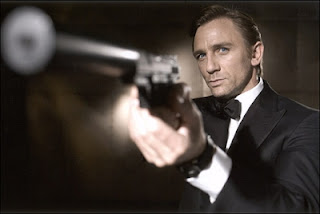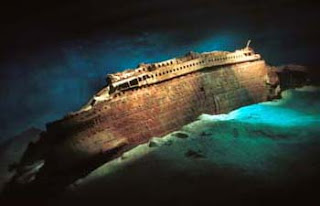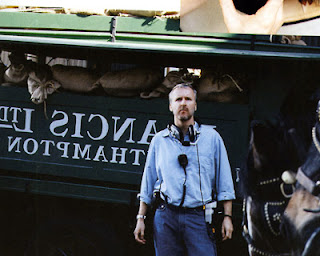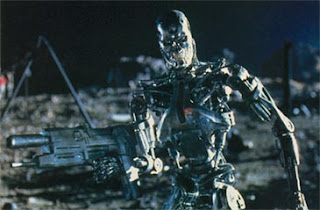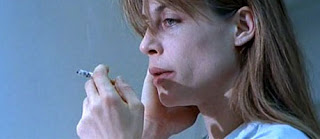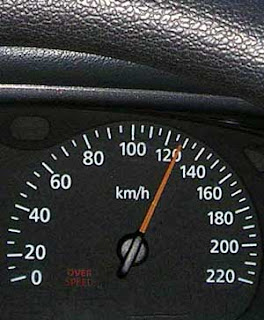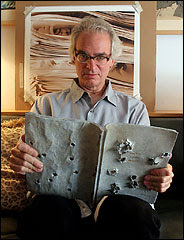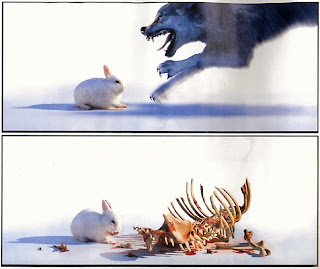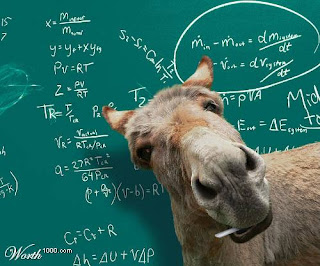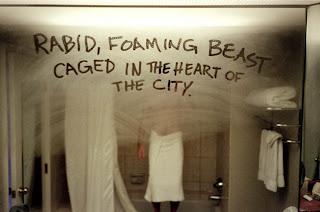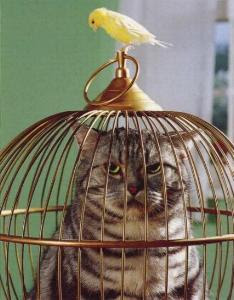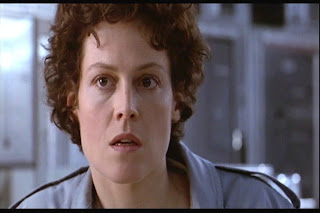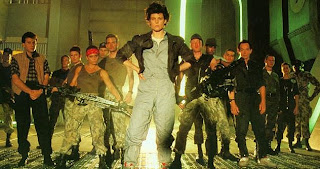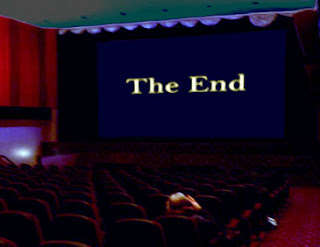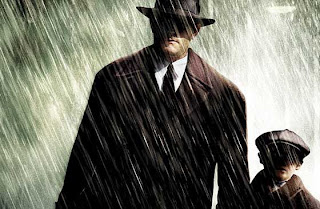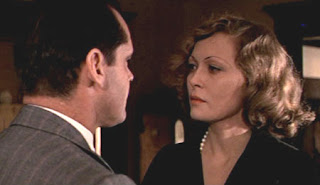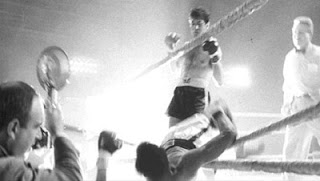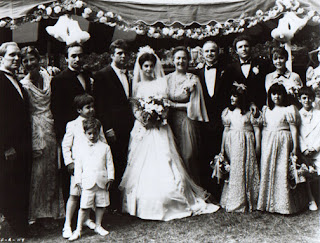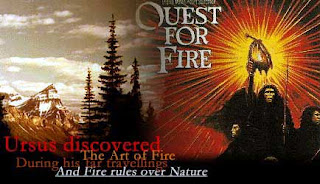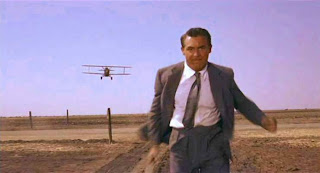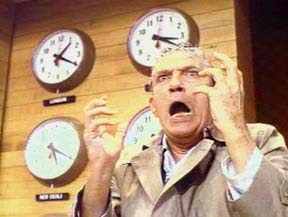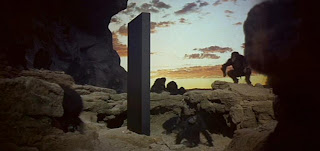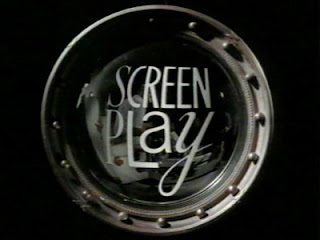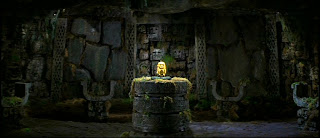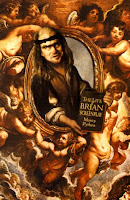Hey guys,
Ya know, I've introduced Miriam Paschal so often, I'm running out of things to say. She's an exceptionally hard worker and good friend. Those of you in Scribosphere may recall her great movie breakdowns. Everyone else would know her from her wonderful presence on TriggerStreet where you can also read three of her screenplays.
I must say, Mim, I loved your non-verbal example.
As always, thanks so much.
-MM
---------------------------------------------------------
BAD EXPOSITION
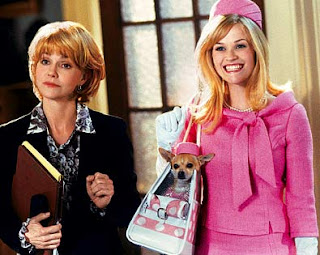
LEGALLY BLONDE TWO / RED, WHITE & BLONDE
I love the Legally Blonde movies. Reese Witherspoon is so cute and perky without being overly sugary. She turns into a real person at just the right moments. The humor is great. Stifler's Mom, I mean MILF, I mean Jennifer Coolidge, is an awesome sidekick. But the exposition in LB2 is just terrible. It's like they didn't even try. They just went with every cliche they could think of.
It starts out with Paulette, Margo, and Serena looking at a scrapbook that one of them has made for Elle. It basically rehashes the first movie and gives a little explanation of what happened between number one and number two. There's a picture of Elle. We hear (voice over) one of them say, "She could have been a playmate." Another one says, "She's a lawyer. That's even better." Wow. Elle's a lawyer. We could have seen her entering a great big law firm, but no. We got to hear, "She's a lawyer."
Another picture: "Oh, that's the day she passed her LSATs." Obviously she had to pass her LSATs if she's a lawyer.
And here's a souvenir. Paulette asks, "Is that the key to her first office at the firm?" It says under the key, "key to first office."
Okay, this is barely passable. It's cute. The pictures are full of color and detail. And it recalls perfectly the tone of the first movie, just in case any of us forgot. The scene that really reeks of bad exposition is the one that moves the entire plot forward. Yes, it's the plot dump.
The introduction is at the end of the previous scene, when Bruiser barks urgently at Elle. "Oh my God, I almost forgot," she says. And when we find out what she almost forgot, this line makes no sense. There is no way she'd forget something as important (important to Elle) as her dog's mother.
Cut to the plot dump scene. The private detective says, "You want me to what?" Could there be a worse line? It screams to the audience, "Exposition is coming up." Who doesn't hate it when one character says, "You want to what?" or "Let me get this straight." And he leads her all the way through the scene. "You want me to what?" / "For your dog." / "I'm the highest paid, most sought after private investigator in Boston." / "May I ask why." / and the piece de resistance: "You want to send an invitation to your wedding to your dog's mother." Duh. Do we need this synopsis?
This reminds me of that new show, "Are You Smarter Than A Fifth Grader?" I think a fifth grader could have written a better exposition scene than this one. Maybe it should have been set in a restaurant and become one of the classic family dinner scenes. They seem to work well.
GOOD DIALOGUE EXPOSITION
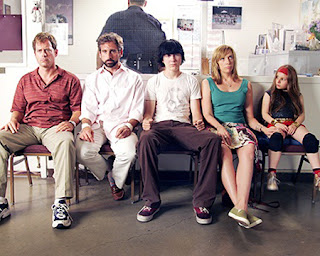
LITTLE MISS SUNSHINE
The scene is the family dinner, but I want to preface this with the character introductions. All the main characters are introduced very economically and with as little dialogue as possible. It's mostly visual. We see Olive watching a pageant, which will become the focus of the movie. I watched my DVD with the commentary on and Jonathan Dayton says that the first image is not something you want to throw away, which is why he started with Olive's eyes.
Then we get to meet Richard, Dwayne, Grandpa, Sheryl, and Frank. Each scene shows the contradictions that give them depth. Richard is a motivational speaker who can't motivate his audience to show up. We're not sure about Dwayne, but he's counting down the days to something, so we figure we'll find out later. Grandpa is a drug user, which is a contradiction in an old person. Usually drug users don't live to be that age. Sheryl wants to be a good mom, but she smokes and lies about it. And Frank just tried to commit suicide. Inner turmoil is always a good indicator of character contradiction.
Then they all come home and have dinner. Michael Arndt, the writer, said he wrote the script with the idea of shooting it himself, so he made it as low budget as possible. He said if he had been more imaginative, the exposition might have been more visual, but he had six characters and six back stories and the best and cheapest way he could think of to get them all out was a family dinner scene. The commentary then went on to reveal that the family dinner scene has a long and respected history in the movies. Arndt mentioned Italian movies and then Alien was mentioned. There's a family dinner scene in that, after Kane mysteriously recovers and just before the alien breaks out of his chest.
So this family dinner scene is a tried and true way to get your exposition out. I would also like to mention my favorite movie, Back to the Future, in which the exposition is also handled in a family dinner scene ("Oh that's so stupid. Grandpa hit him with the car."). The directors, Jonathan Dayton and Valerie Faris said that the producers and studios wanted to cut this scene to the bare bones and get on the road faster, but they felt it was important to let these people talk, and they fought to show the whole scene.
The scene in Little Miss Sunshine works because some of these family members are meeting after many years or have never met. Later on we learn that Richard is Sheryl's second husband and not the father of Dwayne. Her brother, Frank, has never met Richard's father, Grandpa. And he has not seen his nephew, Dwayne, or his niece, Olive, in many years. He has just tried to commit suicide and everybody is curious about that. The conversation is very natural and believable. Arndt pointed out that one of his favorite lines introduces the scene. "Honey, there's a bucket of chicken in the car. Could you go get it and I'll make a salad." That speaks volumes about their lives and values.
There's not a lot of humor in this scene. Grandpa is the funniest with his "not again with the fucking chicken" line, but the main tone is warmth between the family members and also distance. They love each other, but they frustrate each other and they don't understand each other. Yet despite this frustration and lack of understanding, they will stand up for each other to the bitter end... quite literally as we will see later in the hospital.
GOOD SILENT EXPOSITION
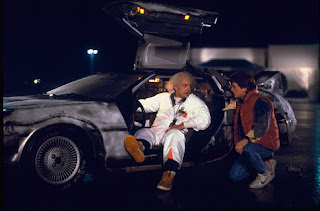
BACK TO THE FUTURE
So I was going to have both my examples of good exposition come from this movie, but there are so many good family dinner scenes to choose from. The main backstory that informs Marty's decisions happens over family dinner, but the opening scene, when the credits play, gives us Doc Brown's backstory.
There is sound in this scene, but it's completely unnecessary. You can turn it off and get just as much out of it.
It starts with clocks: hundreds of clocks. There are vintage clocks and modern clocks. There is a Harold Lloyd clock with the man hanging off the arms of the clock, so we get some foreshadowing right away. We see the newspaper articles of how the old Brown mansion was destroyed, which we will learn later happened when Doc sank all his money into building the time machine.
We see the pictures of Thomas Edison and Ben Franklin, Doc's heroes.
Then we see the Rube Goldberg machine that Doc has built to streamline his morning routine. Well, it's not a classic Rube Goldberg machine, but it's inspired by one. However, something is wrong. The coffee pot pours hot water onto the hot plate in the absence of the pot...and coffee. Strange.
The TV comes on and the morning news leads with a story about stolen plutonium. You could argue that the dialogue is a little important here, but behind the newscaster is a visual with the radiation symbol and the words "Plutonium Theft?" I could still leave the sound off.
The toaster pops up burnt toast. The bread looks as if it's been there for days. Dog food is dispensed into a dish that is already overflowing with uneaten food. Where is the dog? And his name is Einstein because that's what's written on the dish. Now we wonder where is the man who lives here and, more to the point, where is his dog?
The machine carries the empty can to the garbage, where more empty dog-food cans pile up. Past the garbage can, Marty's feet enter the door and we see his hand put the key back under the mat. So this is not his home. He's a visitor. He comes in, looks around, and drops his skateboard, which rolls across the room to the bright yellow metal plutonium container.
So we know this is a man obsessed with clocks, or time. He admires inventors. He's an inventor himself with his time-saving machine. He's taken his dog and been gone for days. And he stole some plutonium. What could be more intriguing?
